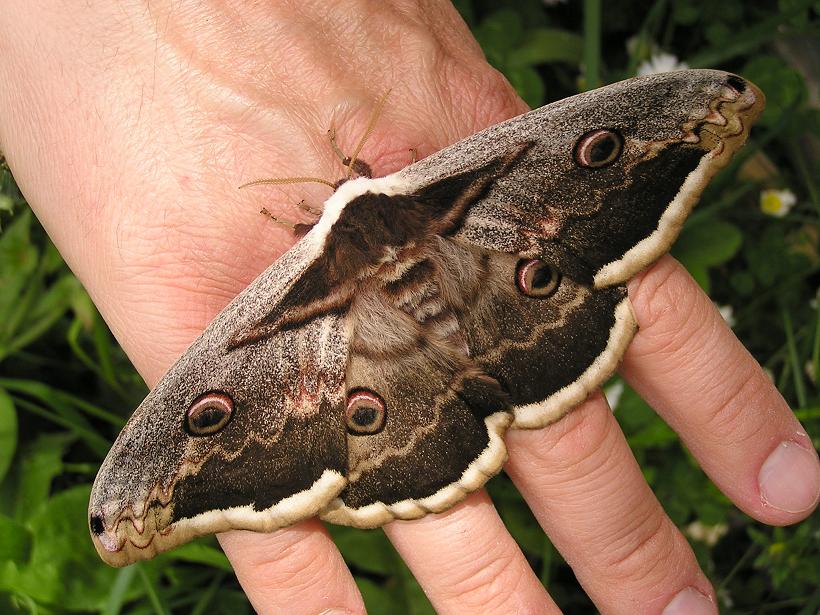
Saturnia pyri (Saturnia pyri)
Phylum — arthropoda
Class — insecta
Order — lepidoptera
Family — saturniidae
Genus – saturnia
Appearance
Newborn caterpillars are black and have long red hair. The younger caterpillars are black with transverse orange stripes. The older caterpillars are green with thin longitudinal white stripes on the sides of the body and green with blue tips outgrowths. Before pupation the caterpillar turns brown-red.
It is the largest European moth, with a wingspan reaching 15–20 cm (6–8 in). Females are larger than males. The body of the butterfly is covered with hairs. Males have feathery antennae. The wings are brown with thin dark stripes and lighter areas. The edges of the wings are lighter. There are large bright eyespots on all the wings.
Habitat
Saturnia pyri occurs from North Africa across southern and the more southern Central Europe (Southern Alps, Alsace etc.) to western Asie (Iran).
Behavior
The activity of the females is exclusively nocturnal, the males are also active during the day.
The moths fly from March to June. The pupa overwinters in the cocoon, often more than once.
Diet
The caterpillars feed on the leaves of raspberries and other plants in the Rosaceae family.
Adult butterflies of this species do not feed and survive on the supplies accumulated during the larval stage.
Reproduction
For their reproduction you need a terrarium with a size of 70 x 70 x 100 cm. The female lays eggs in groups of 10-20 insects on the bark of the forage plant. Each female lays up to 300 eggs. The eggs are white oval with a darker ring. The incubation period is 7-10 days. If the newborn caterpillars do not begin to feed, they should be placed for 1-2 days in a dark place. The caterpillars should be kept in mesh terrariums for 5-6 insects. You need to place a branch of a forage plant in the terrarium. Forage plants should be replaced every day. It is prohibited to feed the caterpillars with wet branches. Caterpillars should be kept at a room temperature and humidity of 60-70%. The caterpillar develops in nature for about 3 months, but at a higher temperature it can pupate in one and a half to two months. The cocoon is brown, the caterpillar attaches it to a branch or builds it in leaf litter, if there is one in the terrarium. The pupa is brown. Pupae need diapause. Until October the cocoons can be stored at a room temperature in slightly moist sawdust, then they should be placed in the refrigerator lid and stored at a temperature of about 5 °C and a humidity of 60-70%. In the spring, not earlier than February, the cocoons should be moved to a warm place. After 2-4 weeks butterflies will hatch from the pupae. However, some butterflies do not hatch until the following year. The lifespan of a butterfly is 7-12 days.
In captivity
The mesh terrarium with a size of 50 × 50 × 70 mm is suitable for keeping butterflies. Room temperature is necessary.
 Russian
Russian
 English
English























